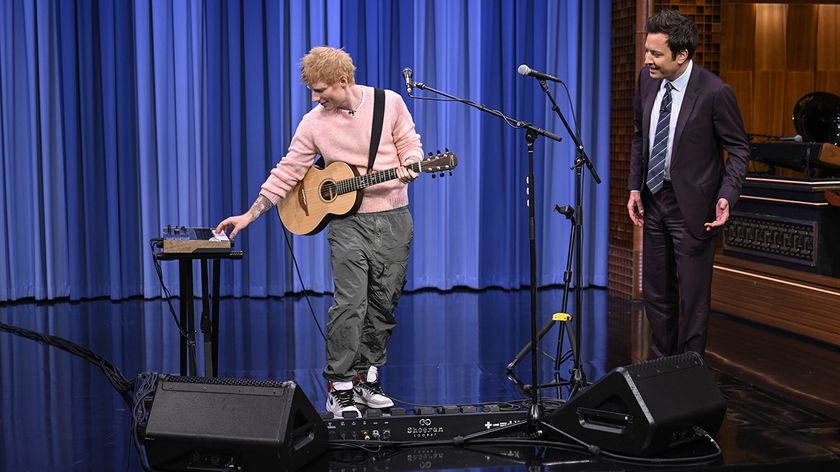Anatomy of an arrangement: your guide to song sections
We take you on a guided tour of a 'standard' song's structure

Whether it's a club banger of romantic ballad, every piece of music takes the listener on a journey through time.
One of the biggest challenges we face as musicians is turning initial ideas into a properly finished track that'll keep listeners reaching for the replay button.
An arrangement is the way we 'map out' that sonic journey, and in the world of pop it's made from sections that most songwriters employ.
This formula has proven to be successful time and time again for decades, but what exactly makes each section tick?
Let's find out…
Intro
Short for 'introduction', the intro is the first part of the song you hear, its purpose being to set up the song and lead into the verse section.
It might be a build-up starting with just one or two elements of the main backing track, or maybe the chorus chords with vocal ad libs laid over the top.
Get the MusicRadar Newsletter
Want all the hottest music and gear news, reviews, deals, features and more, direct to your inbox? Sign up here.
Verse
The verse is where the main back story of the lyric generally happens, filling in background information to set up the chorus lyric. Unlike the bridge and chorus sections of a song, verse lyrics are usually unique to each verse, like the stanzas of a poem.
Bridge
The bridge (known as the prechorus in US songwriter-speak) is the section that forms the link between the verse and the chorus. As the chorus is usually on a higher energy level than the verse, the bridge section often needs to provide some sort of build.
If the verse and chorus chords are the same, the bridge can be a new progression that makes re-introducing the verse chords in the chorus seem fresher to the ear.
Chorus
The chorus is the most often-repeated bit of a song, the part that you sing along to and that contains the main idea of what the song is about, both lyrically and musically.
It should be easy to remember, as it usually occurs at least twice in the average arrangement and features the main hook of the song. Most choruses tend to be eight bars long, but often double up to 16 bars, especially the second or third time around.
Tag
Often, the last line of a chorus lyric can hang over into the next section, which can be a problem if your verse lyric falls on the downbeat. In this scenario, inserting a two- to four-bar tag is a way to avoid the vocal crossing over, allowing the singer to 'reset' by giving them a break before the next verse happens.
Tags can either be instrumental, broken down to act as punctuation, or can contain alternative hooks or melodies in their own right.
Middle 8
Known as the bridge in the US, the middle 8 is a section in the middle of the song where there's often a change of pace.
Main elements of the track drop out, different instruments take over, chords and melodies might change, all to give the listener a break before the chorus comes back in again.
Outro
The outro (the opposite of the intro) is the final part of the song, and is often just the chorus repeated two or three times to fade (in which case it would be known as the 'outro chorus'), although it can be a totally unique new section specially written to bring the song to a close.
In a typical arrangement, sections are eight bars long, but four- and 16-bar sections aren't unusual. An archetypal arrangement would be:
- Intro
- Verse 1
- Bridge
- Chorus
- Tag
- Verse 2
- Bridge
- Chorus
- Middle 8
- Outro Chorus
Club versions and dance arrangements
Arrangement-wise, tracks intended for club play work in a slightly different way to a radio-friendly vocal pop tune. They tend to be simpler arrangements composed of long sections to make the track easy to dance to. A good example of a typical club arrangement is the 5:40 original mix of Vicetone's United We Dance.
Beat intro
Generally 16 bars or more of drums/percussion to give DJs an easy way to mix into the track from the previous tune. A melodic hook often fades in gradually as the intro progresses.
Breakdown
At this point the track will revert to its most basic components. Often, the drums drop out completely, making room for a sparse arrangement of musical elements.
Build-up
Sets the stage for the chorus or 'drop' section by building tension gradually, doubling the speed of drum fills, using risers - synth sounds that rise in pitch or get brighter as the section goes on.
Drop
The equivalent of a pop chorus - dance music drops often tend to come in hard with a bass-heavy groove and full-height synth hook.
Middle break
Providing respite in the middle of the tune, this middle break often contains its own unique elements, ending with a mini-build-up.
Second drop
The second drop is similar in energy and pace to the first, but may contain significant changes to the hook, bassline or drums, to add variety to the track.
Beat outro
The opposite of the beat intro, providing a good long chunk of simplified groove for DJs to mix out on.
For the purposes of getting radio airplay, original five- to ten-minute versions of club tunes are often edited down to three or four minutes, usually by shortening the intro and outro sections, and rearranging the extended central sections into a more regular song structure.
Can't make the necessary arrangements? Check out Computer Music issue 229 for ways to turn your musical ideas into amazing full songs today! Plus: FREE Transient Shaper - 59 VST/AU plugins - 900 Cinematic Drama Samples.
MusicRadar is the number one website for music-makers of all kinds, be they guitarists, drummers, keyboard players, DJs or producers...
- GEAR: We help musicians find the best gear with top-ranking gear round-ups and high-quality, authoritative reviews by a wide team of highly experienced experts.
- TIPS: We also provide tuition, from bite-sized tips to advanced work-outs and guidance from recognised musicians and stars.
- STARS: We talk to musicians and stars about their creative processes, and the nuts and bolts of their gear and technique. We give fans an insight into the craft of music-making that no other music website can.

“A musical style, defined by plaintiffs as ‘pop with a disco feel’, cannot possibly be protectable”: Dua Lipa wins victory in Levitating court case as judge rules that there is no copyright infringement

“At the time, I wasn't, like, the coolest kid, and people didn't want to be in a band with me”: Ed Sheeran explains why he started using looper pedals, then demonstrates one by performing a number one hit that he wanted to give to Rihanna











